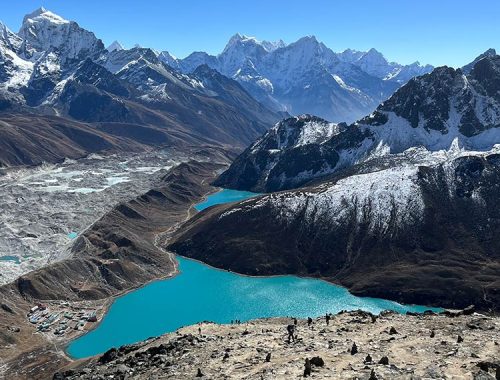Before I went back to Bogotá there were two nearby places I did not want to leave without checking out: Taganga and Rodadero. What I find fascinating about them is how they sort of represent polar opposites; while Taganga is usually compared to a hippie haven, Rodadero is tailor made for the resort types. They’re both very popular and also part of the reason Santa Marta sees so many visitors, with a considerable amount choosing to stay there instead of the city proper.
I decided to start with Taganga, a tiny fishing village surrounded by small mountains located a few kilometres from Santa Marta. I’d read about a viewpoint in the mountains somewhere along the way and wanted to check it out, so I asked the minibus driver to drop me off there and walked the rest of the way. Walking alone on less busy roads is not usually recommended in Colombia (all it takes is one loco with a machete for things to turn sour!) but since it was early in the day I decided to take the gamble.

The viewpoint offered some solid views of the beach, although they got considerably better on the way down. I got to the village with relative ease but my first impression wasn’t amazing, far from it. The place feels a little run down and could definitely do with a bit of upkeep! While in Santa Marta I heard many travellers going on about how much they either loved or hated Taganga – there was no in-between. For me, it was somewhere in the middle. Not great, but not awful either. The village’s only attraction (apart from the infamous drug-fuelled party scene) is the beach, so that’s where I headed first. Believe it or not, it managed to impress me even less than the one in Santa Marta.


Look, being from Portugal I know I’m spoiled when it comes to beaches and the ones I saw throughout northern Colombia just didn’t cut it for me. This one was no exception. Just a matter of preference, of course! However, I did enjoy walking on the sand and checking out the fishing boats anchored near the shore. I also saw a few arrows pointing to a secret beach across the mountains but felt like it wasn’t worth risking alone and didn’t do it. After exploring a bit further inland I headed back to the main road to wait for the next minibus to the city.



The bus to Rodadero also departs from the centre of Santa Marta and covers the few kilometres separating the two in less than 20 minutes. Chances are anyone flying into Santa Marta will have passed by on the way to the city as it is accessed via the same road. Rodadero itself doesn’t have an awful lot to see, it’s just the one promenade with hotels and the beach. There are a few restaurants as well and plenty of souvenir shops but prices tend to be higher than Santa Marta, which is… not great.

I got off the bus and pretty much walked from one end of the beach to the other since there was little else to do. Once again, the beach was not really up to my standard (although it is by far a better alternative to the one in Santa Marta!) and – despite the heat – I didn’t feel like sticking around or going for a dip. I enjoyed my walk on the sand and seeing the Colombians having a relaxed time in the sun, as well as all the sellers of food and drink slowly making their way up and down the beach. The strip is quite long and doesn’t fill up as easily as Taganga, so there was plenty of space for everyone. Even the odd Portuguese tourist. 😁



While I didn’t particularly love Taganga or Rodadero, I was glad to have visited both as they’re so close to Santa Marta it would be silly not to. After three months stuck indoors it was great to be able to explore and discover new places again. That feeling of discovery is why I like travelling so much, after all. On the way back I got rewarded with the most amazing view of Santa Marta which, in a way, marked the end of my productive stay in northern Colombia. The rain and chill of Bogotá awaited me in a couple of days and I was strangely excited about it.



